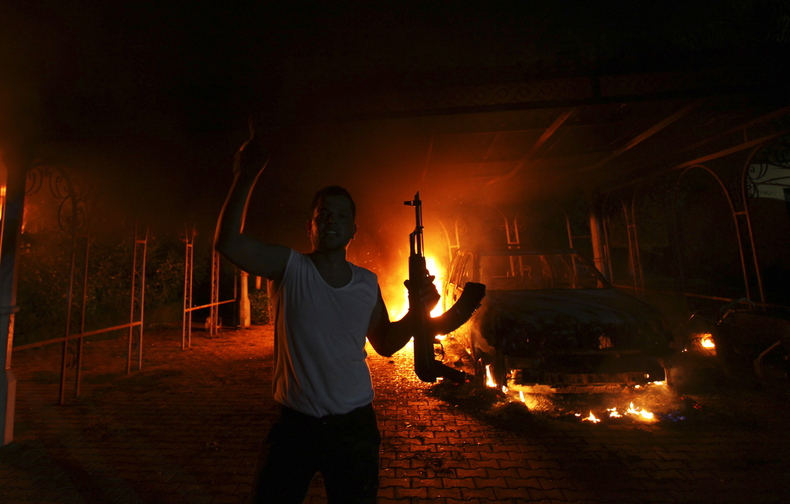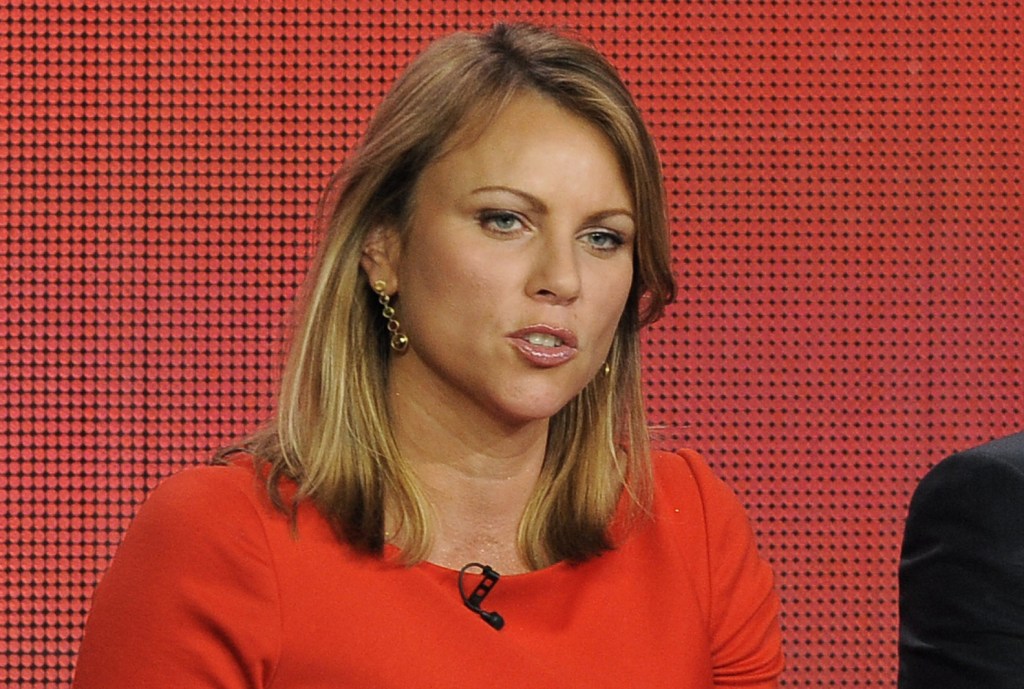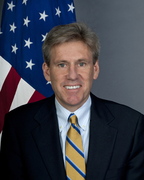CAIRO — CBS on Friday retracted its account of what took place last year at the U.S. diplomatic compound in Benghazi, Libya, a stunning setback for its venerated “60 Minutes” news show that underscored another reality: Fourteen months after jihadists stormed the complex and a nearby CIA compound – killing four Americans, including the ambassador – there’s still no accepted narrative of what happened.
It was security contractor Dylan Davies’ unheard account of the events of Sept. 11, 2012, that made the “60 Minutes” piece a journalistic sensation after what the news program said was a yearlong investigation. That account differed dramatically from what other reporters and witnesses had said about that night, and it prompted Sen. Lindsey Graham, R-S.C., to threaten to block all White House appointments until the Obama administration released notes from the interviews the FBI conducted with survivors of the attack to congressional investigators.
TOLD DIFFERENT STORY TO FBI
In the end, however, Davies’ claims to “60 Minutes” that he’d jumped a 12-foot wall to get into the compound, where he clubbed an attacker in the head with the butt of his rifle, were undone by statements he’d given to the FBI two days after the assault. Those indicated he’d been nowhere near the compound when the attack took place, which matched a report Davies had given his bosses at the Blue Mountain security company – a document that somehow escaped the notice of “60 Minutes” investigators.
Other parts of his “60 Minutes” account didn’t match published reports of what happened that night. For example, Davies claimed he’d sneaked into the Benghazi Medical Center and spotted the body of Ambassador Christopher Stevens lying on a gurney. The doctor who treated Stevens, however, had told McClatchy that no Westerners arrived to pick up the ambassador’s body until 6 a.m. Sept. 12, more than six hours after Libyans had taken the unconscious Stevens to the facility.
Davies’ statement to the FBI two days after the attack said he’d learned of Stevens’ death on Sept. 12, around the time when Libyans and Americans confirmed it.
CBS REPORTER APOLOGIZES
On Friday, CBS correspondent Lara Logan, whose 15-minute “60 Minutes” piece aired Sunday, appeared on the network’s “This Morning” and apologized for the piece, saying Davies was no longer credible. Logan said she was misled, adding: “We made a mistake.”
She said she didn’t know about the FBI incident report until after her piece aired, but she offered no explanation for how it had escaped notice. CBS had removed the story from the “60 Minutes” website and apps overnight.
“What we know now is he told the FBI a different story to what he told us,” Logan said. “That was the moment for us when we realized that we no longer had confidence in our source and we were wrong to put him on air, and we apologize to our viewers.”
The retraction fueled already-looming questions over the events of that night and raised mounting concerns among some about whether what happened will ever truly be known – and whether those involved will be prosecuted.
Within hours of the attacks, which marked the first death of a U.S. ambassador on the job since 1979, they became fodder for opponents of the Obama administration, leading to scrutiny of every word uttered about them. Republicans in Congress have called the lack of a clear narrative evidence of a cover-up.
“And where are the survivors?” Graham asked on Fox News last week. “Fourteen months later, the people who survived the attack in Benghazi have not been made available to the U.S. Congress for oversight purposes. So I’m going to block every appointment in the United States Senate until the survivors are made available to Congress.”
Among the questions about the assault that remain: Was the attack planned, and if so how long beforehand? How many of the roughly 70 attackers, if any, were motivated by a video mocking the Prophet Muhammad that had led to protests in Cairo earlier that day? How many had sought to attack the compounds because of the confirmation a day earlier that a U.S. drone strike had killed Libyan al-Qaida leader Abu Yahya al-Libi? How many terrorist and insurgent groups were involved?
Yet to be answered, as well, is what Stevens’ role was in the security posture in Benghazi, particularly in light of attacks on other nations’ compounds and diplomats in the months beforehand. Even Stevens’ reason for visiting Benghazi remains unclear, as are the activities there of the CIA, which had a larger presence than the State Department. Some have wondered whether the special mission was a front for CIA operations.
Within hours of the assault on the diplomatic compound and the CIA annex, there were conflicting accounts of what had happened when attackers stormed the gates around 9:40 p.m.
The New York Times first reported that the assault had come after a protest, a version the Obama administration repeated in the weeks after the attack.
PROTEST IN QUESTION
But other news stories, including by McClatchy, said there had been no protest, that the attackers had arrived unheralded and begun the assault.
In emails made public in May, it’s clear that the CIA introduced the idea of a protest as the administration was drawing up a set of talking points to be given to Congress. But there’s been no explanation of where the CIA version came from, and the email chain shows that none of the officials who were debating the talking points ever challenged it.
When the administration later backed away from the claim, Republicans charged that it had lied about the protest to avoid having to admit in the middle of a presidential re-election campaign that al-Qaida remained a major threat.
For friends of the popular ambassador, for whom Libyans in Benghazi had great affection, the “60 Minutes” report marked another exploitation of his death, this time by a contractor trying to sell a book to be released about the attack and a respected news organization trying to promote a story.
Send questions/comments to the editors.





Success. Please wait for the page to reload. If the page does not reload within 5 seconds, please refresh the page.
Enter your email and password to access comments.
Hi, to comment on stories you must . This profile is in addition to your subscription and website login.
Already have a commenting profile? .
Invalid username/password.
Please check your email to confirm and complete your registration.
Only subscribers are eligible to post comments. Please subscribe or login first for digital access. Here’s why.
Use the form below to reset your password. When you've submitted your account email, we will send an email with a reset code.